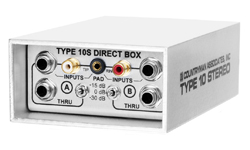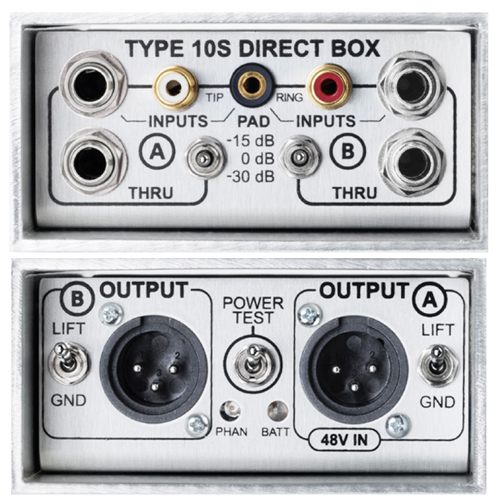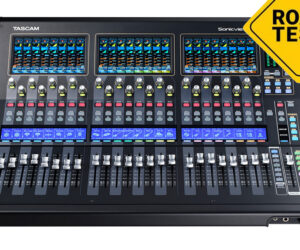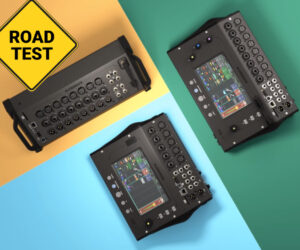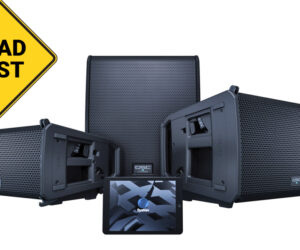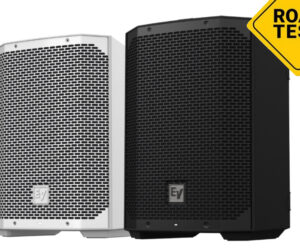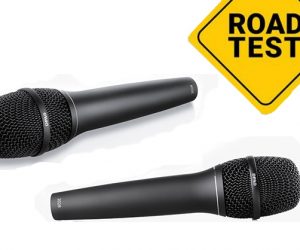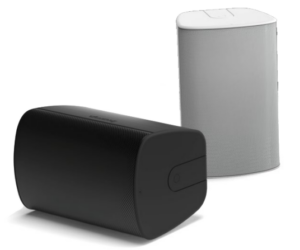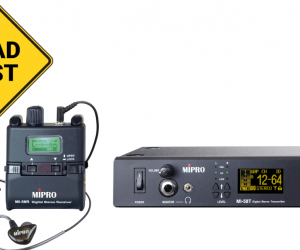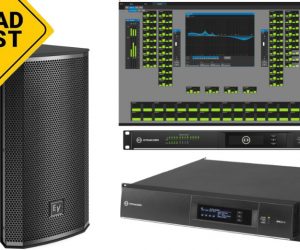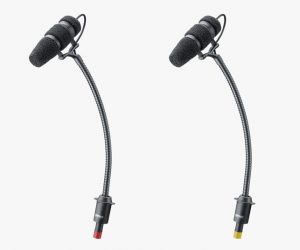Countryman is well known for the Type 85 DI box, and I’ve seen more than a few riders where a DI is simply referred to as a “Countryman.”
I have several Type 85s in my inventory, and have been looking forward to getting the newer Type 10S to the bench for a listen.
An active box, it’s built as ruggedly as the Type 85, with a solid aluminum casing that can stand up to anything a tour or crew can dish out. To be expected, it’s slightly larger than the single-channel Type 10, measuring 2 x 4 x 6.2 inches and weighing 31.2 ounces.
And like it’s single-channel sibling, the Type 10S is finished in a silver color with black lettering that’s very easy to read, even in the dim light at a gig.
The controls and jacks are recessed for protection but are still simple to access and use. One end contains the inputs, which include a gold-plated stereo 1/8-in jack, two gold plated RCA jacks, two 1/4-in input jacks, and two 1/4-in “THRU” jacks.
Also included are two input PAD switches (one for each channel) that offer three settings: 0 dB is for most sources, including guitars and keyboards as well as computers and multimedia devices; -15 dB can tame the levels of hot keyboards or other active instruments; and -30 dB allows the user to plug in the output from an amplifier, like a guitar head, and direct the amp sound into the PA or recording.
Caution with that last setting, however. As the manual points out, a dummy load or loudspeaker should also be connected to the amplifier, because the Type 10S will not provide the required load to the output of a tube amp.
The other end contains the outputs and test section. There are two XLR connectors, each with its own ground lift switch, along with a momentary power test switch and two LEDs.
If operating with phantom power, depressing the switch will light up a green PHAN LED. If operating on an internal battery, the BATT light will glow green if the battery has suitable juice and red if it’s low. This serves as a quick way to check if the unit is being powered correctly when used.
The stated frequency response is 10 Hz – 50 kHz (+/- 1 dB) and cross talk rejection is 105 dB (20 Hz – 20 kHz), with total harmonic distortion less than 0.001 percent. The phase response is listed as linear, within +/- 2 degrees across the full audio range.
The unit is powered via 48-volt phantom or with a 9-volt alkaline battery. Applying phantom power to channel A will power both channels in the DI.
To use the battery, you need to insert a 1/4-in plug into channel A because there’s a switch inside the jack that turns on the battery. Countryman states a typical 9-volt alkaline should provide about 130 hours of use.


